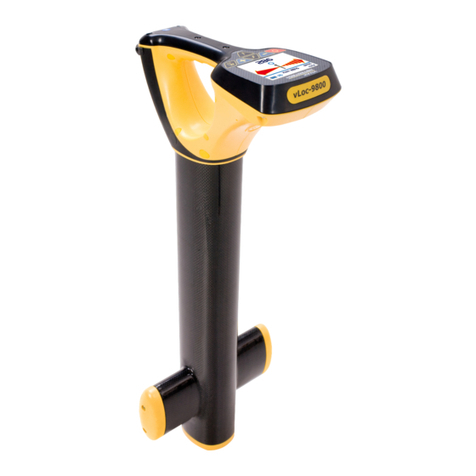Table of Content
Introduction...............................................................................................................................................1
1.1 General Safety & Care Information......................................................................................... 1
1.1.1 Work-site Safety .................................................................................................................. 1
1.1.2 Equipment Safety ................................................................................................................ 1
1.1.3 Batteries and Environmental Safety..................................................................................... 1
1.1.3.1 Alkaline Batteries (Non Rechargeable).......................................................................1
1.1.3.2 Nickel Metal Hydride Batteries (Rechargeable)..........................................................2
1.1.3.3 Lithium-Ion Batteries (Rechargeable).........................................................................2
1.1.3.4 Lithium Metal Batteries (Non Rechargeable)..............................................................2
1.1.3.5 Transportation of Lithium-ion and Lithium Metal Batteries..........................................3
1.1.3.6 General Rules Regarding Disposal of Batteries.........................................................3
1.1.4 Care of Equipment............................................................................................................... 3
1.1.5 Care When Interpreting the Information Provided by the Locator........................................ 3
1.1.6 American & Canadian Safety Notices.................................................................................. 4
1.2 Service & Support................................................................................................................... 5
1.2.1 Serial Number and Software Revision Number ................................................................... 5
1.2.2 International and National Distributors and Service Centers ............................................... 6
Power Supplies.........................................................................................................................................7
2.1 vScan Receiver Batteries........................................................................................................ 7
2.1.1 Alkaline Batteries................................................................................................................. 7
2.1.2 Charging the Receiver Optional Li-ion Battery Pack............................................................ 7
2.2 vScan Transmitter Batteries.................................................................................................... 8
2.2.1 Alkaline Batteries................................................................................................................. 8
2.2.2 Charging the Transmitter Li-ion Batteries ............................................................................ 8
User Controls/Connections.......................................................................................................................9
3.1 Receiver.................................................................................................................................. 9
3.1.1 Display................................................................................................................................. 9
3.1.2 Receiver Controls ................................................................................................................ 9
3.1.3 Warning/Alerts................................................................................................................... 10
3.1.3.1 Shallow Line Alert.....................................................................................................10
3.1.3.2 Swing Alert...............................................................................................................10
3.1.3.3 Signal Overload Alert................................................................................................10
3.1.3.4 Overhead Signal Alert ..............................................................................................10
3.1.3.5 Action Required Alert................................................................................................11
3.2 Transmitter............................................................................................................................ 11
Locating ..................................................................................................................................................12




























